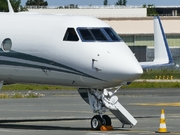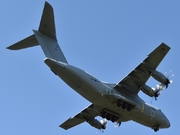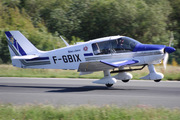Dépêches
Fitch Affirms US Airways' Ratings; Outlook Stable
Dépèche transmise le 20 mai 2011 par Business Wire
CHICAGO--(BUSINESS WIRE)--Fitch Ratings has affirmed the debt ratings of US Airways Group, Inc. (LCC) as follows:
--Issuer Default Rating (IDR) at 'CCC';
--Senior Secured Term Loan due 2014 at 'B+/RR1';
--Senior Unsecured Convertible Notes at 'C/RR6'.
The Rating Outlook for US Airways is Stable. Ratings apply to $1.1 billion of term loan debt and $179 million of outstanding convertible notes.
Ratings reflect the airline's high lease-adjusted leverage, relatively weak though improving liquidity position, and volatile cash flow generation in an industry that remains vulnerable to fuel price and demand shocks.
The affirmation of LCC's ratings follows another period of significant turmoil in global energy markets that has driven jet fuel prices higher and introduced more risk into the airline's cash flow and liquidity outlook. After a year of solid improvement in operating performance during 2010, as air travel demand recovered and industry capacity grew slowly, LCC is facing a more challenging operating environment this year, with annual fuel costs forecasted to increase by more than $1 billion versus 2010.
The key issue facing LCC as it seeks to repair its balance sheet is a more sustainable liquidity position that will allow it to withstand future revenue and fuel price shocks more effectively than it did during the 2008-09 downturn. Fitch remains focused on the carrier's unrestricted cash and investments balance, exceeding $2.1 billion or 16% of projected 2011 revenues, as the first step in a long-term effort to de-lever via consistently positive free cash flow (FCF) in an industry that has shown greater capacity discipline and pricing power in its more consolidated form.
Factoring in the potential for increasing tightness in world energy markets and average jet fuel prices that could exceed $3.00 per gallon this year, Fitch expects LCC to remain in a position to generate positive FCF in 2011. This scenario depends greatly on the industry's ability to benefit from significantly higher fares and relatively robust air travel demand through the summer. Based on year-to-date revenue per available seat mile (RASM) results, LCC appears likely to deliver full-year unit revenue growth in the 5% to 10% range, a level that would support positive FCF and relatively stable year-end debt balances in a high fuel cost scenario.
Cash commitments over upcoming years are manageable, with scheduled debt maturities of approximately $400 million this year and $455 million in 2012. The airline's secured term loan ($1.1 billion outstanding) does not mature until 2014. Relatively light capital spending requirements, assuming some combination of sale-leaseback financing and debt to fund 12 Airbus A321 deliveries this year, will also bolster FCF generation.
Unlike 2008, when energy prices ran up quickly in the face of flagging air travel demand and a weak economy, LCC and the other large U.S. airlines have been successful in recovering much of the fuel cost pressure via fare hikes and modest capacity trimming in the second-half 2011 schedule. LCC's revenue performance has been generally solid through the first four months of 2011, with first quarter 2011 (1Q'11) RASM growing by 9% on modest capacity growth, stronger yields and high but stable load factors. Management expects this trend to continue through the summer, with seasonally strong demand and relatively good fare traction helping to boost RASM at a rate similar to that seen in the first quarter. Should crude prices fall and remain below $100 per barrel in the second half of the year, LCC and the entire industry could report solid gains in earnings and cash flow, supporting improvement in liquidity and modest de-levering.
LCC has no fuel hedge protection in place, an approach that generally worked well through 2010 as the higher costs of call option premiums surpassed gains from hedging in a period of rising crude oil prices. During 1Q'11, however, the rapid rise in jet fuel costs eroded LCC's relative fuel cost advantage. Jet fuel accounted for about one third of total operating expenses in 1Q'11. Based on expected 2011 jet fuel consumption, a 10-cent change in the price of jet fuel drives approximately $140 million in annual consolidated operating costs.
A downgrade to 'CC' or below is unlikely absent a more dramatic and sustained fuel price shock that would push unrestricted liquidity below $1.5 billion with accompanying tightness in credit markets. A positive action will not be considered until fuel prices stabilize and LCC's operating outlook supports consistent generation of positive FCF and an improvement in cash balances.
Applicable Criteria and Related Research:
--'Corporates Rating Methodology'; Aug. 13, 2010.
Applicable Criteria and Related Research:
Corporate Rating Methodology
http://www.fitchratings.com/creditdesk/reports/report_frame.cfm?rpt_id=546646
ALL FITCH CREDIT RATINGS ARE SUBJECT TO CERTAIN LIMITATIONS AND DISCLAIMERS. PLEASE READ THESE LIMITATIONS AND DISCLAIMERS BY FOLLOWING THIS LINK: HTTP://FITCHRATINGS.COM/UNDERSTANDINGCREDITRATINGS. IN ADDITION, RATING DEFINITIONS AND THE TERMS OF USE OF SUCH RATINGS ARE AVAILABLE ON THE AGENCY'S PUBLIC WEBSITE 'WWW.FITCHRATINGS.COM'. PUBLISHED RATINGS, CRITERIA AND METHODOLOGIES ARE AVAILABLE FROM THIS SITE AT ALL TIMES. FITCH'S CODE OF CONDUCT, CONFIDENTIALITY, CONFLICTS OF INTEREST, AFFILIATE FIREWALL, COMPLIANCE AND OTHER RELEVANT POLICIES AND PROCEDURES ARE ALSO AVAILABLE FROM THE 'CODE OF CONDUCT' SECTION OF THIS SITE.
- 24/04Ibis Styles London Heathrow : l'hôtel géré par un passionné d'aviation pour les passionnés d'aviation (photos + vidéos)
- 23/04 SkyUp renouvelle son partenariat avec Wizz Air
- 23/04 Play : résultats de mars 2024
- 23/04 Les garde-côtes japonais commande trois Airbus H225 supplémentaires
- 23/04 Vueling et Make-A-Wish France signent un partenariat
- 23/04 TUI annonce ses destinations au départ de Deauville pour l'été 2024.
- 23/04 Twin Jet renforce son programme de vols sur la ligne Toulouse/Rennes
- 23/04 Norse Atlantic Airways : résultats du mois de mars 2024
- 23/04 Volotea renforce son offre entre Lille et le Maroc
- 22/04 Finnair a dévoilé son programme de vol pour les saisons hiver 2024 et été 2025
- 22/04 Qatar Airways annonce le lancement de vols à destination de Kinshasa
- 22/04 Vietnam Airlines et CAE prolongent leur accord
- 22/04 Mermoz Academy de Tours commande des Tecnam P-Mentor
- 22/04 Transavia France reçoit son 2e Airbus A320neo
- 20/04 Friedrichshafen 2024 : Blackwing présente un nouveau modèle de son BW650RG
- 20/04 Friedrichshafen 2024 : JMB Aircraft présente son Phoenix
- 19/04 Friedrichshafen 2024 : le projet "Fly To The North"
- 19/04 Friedrichshafen 2024 : Aura Aero présente pour la première fois ses trois appareils
- 19/04 Friedrichshafen 2024 : Duc Hélices présente son hélice Tiger-3
- 19/04 Friedrichshafen 2024 : Splash-in Aviation expose son Pétrel X







